
| Publisher: | Random House | |
| Genre: | Biographical, General, Fiction, Historical | |
| ISBN: | 9780812993158 | |
| Pub Date: | April 2015 | |
| Price: | $28 |
| Starred | Fiction |
by Elizabeth Berg
Elizabeth Berg (Tapestry of Fortunes) has a gift for creating characters who reflect the emotional lives of ordinary contemporary women. In The Dream Lover, George Sand, the first female bestselling writer in France, is in her 70s. Aware she is beginning to fail, she recalls her astonishing life, full of enviable literary accomplishments and famous friends and lovers, to find "the beating heart of what I most truly was." That vital thing is the need to love and be loved, "for the rest," she says, "is dust."
What comprises "the rest" in Sand's case is, of course, a very great deal. Born Aurore Dupin and raised by her grandmother on the family estate in Nohant, Sand marries young but eventually leaves her philandering husband for Paris, intent on becoming a writer. She finds work as a theater critic for Le Figaro, dressing as a man so that she can buy the inexpensive tickets forbidden to women. Her novels, which she writes at night, are lavishly praised for their eloquence and their unsparing depiction of the realities of domestic life, especially for women. Her circle of lovers and friends widens to include Chopin, Liszt, Hugo and Flaubert. She lives for the passion of each new affair before it, too, runs its course.
Berg's prose is lovely, recalling the rhythms of 19th-century speech. Her Paris and Nohant are flawlessly rendered, rich with the textures of daily life. The tension that fuels The Dream Lover comes from making the larger-than-life experiences of its extraordinary historical protagonist secondary to her emotional core and her consuming need for love. --Jeanette Zwart, freelance writer and reviewer
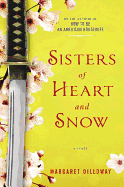
| Publisher: | Putnam | |
| Genre: | Fiction, Cultural Heritage, Contemporary Women, Family Life, Literary | |
| ISBN: | 9780399170805 | |
| Pub Date: | April 2015 | |
| Price: | $26.95 |
| Fiction |
by Margaret Dilloway
The story of Tomoe Gozen, a 12th-century Japanase onna-musha (the female equivalent of a samurai), who may have been a fictional creation, is woven between the modern conflicts of two semi-estranged sisters in Sisters of Heart and Snow by Margaret Dilloway (How to Be an American Housewife).
Rachel and Drew Snow know how their parents met--their father ordered their Japanese mother, Hikari, from a catalogue in the '70s--but Hikari's life before coming to the United States is a mystery, and now that she has dementia and resides in a nursing home, they expect her past to remain unknown. In a rare clear moment, Hikari asks Rachel to find a book in a closet at home. Because Rachel hasn't been back to her parents' house for two decades--not since her father kicked her out when she was 16--she asks her sister to help look for it. When they find the book, which is in Japanese, neither is able to read it, but because their mother wrote their names in it, they know the book's meant for them. Drew hires a graduate student to translate the book, and the sisters are soon engrossed in the stories of Tomoe Gozen and Yamabuki, "sisters of heart" bound to the same man, trying to decipher their significance to their mother and what message she means for her daughters to take from them.
Dilloway's narrative about Tomoe Gozen doesn't always clearly parallel or reflect the present-day story, but it's an interesting framing device and adds an unexpected dimension to the complicated lives of the Snow sisters. --Florinda Pendley Vasquez, blogger at The 3 R's: Reading, 'Riting, and Randomness
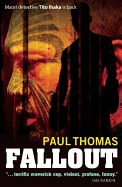
| Publisher: | Bitter Lemon Press | |
| Genre: | Fiction, Mystery & Detective, Literary, International Mystery & Crime | |
| ISBN: | 9781908524492 | |
| Pub Date: | April 2015 | |
| Price: | $14.95 |
| Starred | Mystery & Thriller |
by Paul Thomas
Detective Tito Ihaka, the profane, overweight, Maori star of Death on Demand is back to his truculent ways in Fallout. Auckland District Commander Finbar McGrail, aware of Ihaka's unorthodox, occasionally illegal and undeniably effective methods, has pulled Ihaka off active duty to delve into a cold case.
In 1987, when McGrail had just immigrated to New Zealand, he investigated the murder of a girl named Patty Stenson. Patty was friendly with some wealthy teenagers, children of an Auckland high-roller named Tim Barton, who hosted a huge election-night bash. The next morning, Patty's body was found amid the party rubbish cluttering the Barton mansion.
Ihaka, more obstinate than McGrail could ever be, quickly discovers that some very important people--politicians, businessmen, models--attended at the party, and Barton had left their names off the list he gave to McGrail. Now, nearly 30 years later, those guests will not be happy to be involved in a murder investigation. That just means Ihaka will have to be wilier than usual.
Paul Thomas's books are deservedly popular in New Zealand. Darkly humorous and compellingly twisty, the mystery within the mystery will keep the reader guessing until nearly the end. Exploring the highest levels of political and business corruption, Fallout is a fascinating crime novel. It can be read as a standalone, but readers will surely be unable to resist going back and reading Death on Demand to enjoy more of Tito Ihaka's unusual charms. --Jessica Howard, blogger at Quirky Bookworm

| Publisher: | Pyr | |
| Genre: | General, Technological, Fiction, Science Fiction, Mystery & Detective, Thrillers, Literary, Hard Science Fiction | |
| ISBN: | 9781633880122 | |
| Pub Date: | April 2015 | |
| Price: | $17 |
| Science Fiction & Fantasy |
by David Walton
A quantum particle exists in a state of infinite positions until it is observed. When physicist Jacob Kelley's old friend shows up with a gun and a crazy theory about alternate universes and the quantum intelligences that live there, Kelley simply wants him to leave. When the old friend turns up dead down in the bunker of the supercollider they both worked at, Kelley is the prime suspect.
Or is he? Readers bounce back and forth between up-spin and down-spin chapters, a reference to the different potential states of spinning electrons, one of the subatomic particles (or waves) that quantum physics deals with. In down-spin chapters, Kelley is being prosecuted for killing his friend. In up-spin, he's on the run trying to solve the bizarre murder, as well as dealing with ruthless quantum intelligences, dubbed "varcolacs"--Romanian for demons--by Kelley's brother-in-law Marek, who helps Kelley in his investigation.
Switching back and forth between perspectives, David Walton (Quintessence) spins a fast-paced thriller that deftly weaves scientific theory and plausible speculation into a clear, entertaining narrative. The theoretical concepts never overwhelm the solid characterization of Kelley, his family and the various people who help him along the way--including an ex-boxer uncle who now runs a charity and a defense attorney with a Texas drawl who hides a deep intelligence.
Superposition is smart science fiction for people who want a solidly plotted murder mystery, or for mystery fans who need a little speculation in their whodunit. --Rob LeFebvre, freelance writer and editor

| Publisher: | Arche Press | |
| Genre: | General, Fiction, Science Fiction, Fantasy, Horror, Collections & Anthologies | |
| ISBN: | 9781630230074 | |
| Pub Date: | April 2015 | |
| Price: | $16 |
| Science Fiction & Fantasy |
by Dale Bailey
The short story is thriving in the world of science fiction and fantasy, as collections by Karen Russell and Kelly Link demonstrate. Less well-known but similarly worthy is Dale Bailey (The Resurrection Man's Legacy). His second collection, The End of the End of Everything, shows why his stories have been recent finalists for the Nebula Award and the Bram Stoker Award.
In the title story--a rather violent twist on Poe's "The Masque of the Red Death"--Ben and Lois Divine are invited by Stan and his new wife to Cerulean Cliffs, an exclusive artists' colony. Inhabitants there indulge in suicide parties as the world teeters on the brink of extinction. The Earth has become "baked and fractured" from a "slow doom" called the "ruin" that will eventually consume all. "Troop 9" is a dark piece about girls in a scout troop going feral in the Adirondacks. Time travel is explored in "Mating Habits of the Late Cretaceous," wherein a couple visits a Jurassic Park-like world in hopes of saving their marriage.
Bailey can also write with a lighter hand. "The Creature Recants" is a humorous, tongue-in-cheek tale about the pitiful Creature from the Black Lagoon now in Hollywood struggling to make ends meet: " 'Don't expect too much,' Karloff had advised him over sushi...."
These quirky stories offer a variety of twists and turns in the science fiction fantasy genre, revealing Bailey as an inventive and innovative writer well worth watching. --Tom Lavoie, former publisher
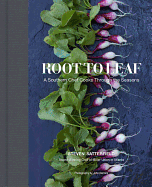
| Publisher: | HarperWave | |
| Genre: | Vegetables, Specific Ingredients, Cooking | |
| ISBN: | 9780062283696 | |
| Pub Date: | March 2015 | |
| Price: | $45 |
| Food & Wine |
by Steven Satterfield
"Root to Leaf is not a vegetarian cookbook--it's a cookbook that celebrates vegetables," as well as a stunning collection of 300 photographs that could rest proudly on any coffee table. Steven Satterfield, the chef at the Atlanta restaurant Miller Union, has been called the "Vegetable Shaman" by the New York Times for his simple, elegant approach to even the most basic produce. In the spirit of butchers who make use of the whole animal, nose to tail, Satterfield thinks vegetables deserve the same respect and utility, root to leaf: "Americans have been conditioned to believe that more is better. It is a first-world problem to have everything you want, anytime you want it, and this type of thinking has done some serious damage to our food systems and collective health. Unlimited options... stifle our imaginations."
The nearly 200 recipes are organized by season and vegetable. Each vegetable garners two pages of description--including what to look for, how and where it grows, as well as how best to prepare it. For example, asparagus (Spring), member of the lily family, is one of the first vegetables to emerge and needs cold winters to regenerate; its size dictates its preparation. Recipes include Roasted Asparagus with Green Garlic and Radishes, and Grilled Asparagus with Brebis and Bread Crumbs. Cucumbers (Summer) are originally from India and naturally maintain a temperature up to 20 degrees cooler than the air, even without refrigeration. Recipes include Cucumber and Crab Salad and Sautéed Cucumbers with Dill. Satterfield makes clear that each season has a bounty of offerings, both familiar and surprising. --Kristen Galles from Book Club Classics

| Publisher: | Grand Central Life & Style | |
| Genre: | Regional & Ethnic, Jewish & Kosher, Cooking | |
| ISBN: | 9781455554355 | |
| Pub Date: | March 2015 | |
| Price: | $35 |
| Food & Wine |
by Katja Goldman, Judy Bernstein Bunzl, Lisa Rotmil
"You don't have to be Jewish to love Levy's real Jewish Rye"--the now-iconic Brooklyn bakery advertising slogan from the 1960s and '70s could be paraphrased for the universal appeal of The Community Table cookbook. Written by friends Katja Goldman, Judy Bernstein Bunzl and Lisa Rotmil to celebrate the Jewish Community Center of Manhattan, the stories and recipes focus on the JCC and the authors' own Jewish heritage.
Home cooks from any background will embrace these detailed recipes, with gorgeous photographs of how-to steps and finished products. Appropriately, the collection opens with a challah lesson. As the authors point out: "For us, challah isn't just bread. It's home, family and tradition." Various uses for the challah dough include Chocolate Crumb Babka, baked "round and plump like our bubbes."
Latkes Four Ways updates the traditional Chanukah potato pancake with encouragement to be creative by adding beets, curried sweet potatoes or parsnips. "Italians have their tortellini, the Chinese have their wontons and Jews have their kreplach"--stuffed pasta often served at the start of Yom Kippur. "Operation Chicken Soup" is one of the book's stories (recipes included), about the New York City JCC teen program to feed the homeless.
The authors highlight many cultures of the Jewish diaspora, including Indian (Green Chicken Masala), Middle Eastern and Ashkenazi (Roasted Tzimmes with carrots and figs) and North American (cornbread). Charts categorizing recipes by dietary restrictions, holiday menus and Kosher recipes for Passover conclude the book. As with Levy's, "You don't have to be Jewish" to savor The Community Table. --Cheryl Krocker McKeon, manager, Book Passage, San Francisco
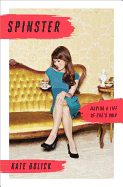
| Publisher: | Crown | |
| Genre: | General, Women's Studies, Biography & Autobiography, Social Science, Women, Personal Memoirs, Feminism & Feminist Theory | |
| ISBN: | 9780385347136 | |
| Pub Date: | April 2015 | |
| Price: | $26 |
| Biography & Memoir |
by Kate Bolick
In the opening pages of Spinster: Making a Life of One's Own, Bolick introduces her five "awakeners," women of the written word who have offered her lessons about how to live as a woman, married or not: Maeve Brennan (1917-1993), essayist at the New Yorker; Neith Boyce (1872-1951), columnist at Vogue; Edna St. Vincent Millay (1892-1950), poet and legendary lover; Edith Wharton (1862-1937), novelist and grand dame; and Charlotte Perkins Gilman (1860-1935), social visionary and prolific writer.
As Bolick discovers each of her five awakeners (a term borrowed from Wharton) and the lessons she finds with them, she changes jobs, moves from city to city, and dates and lives with various men. She started using the word "spinster" in her journals in her early 20s, and always considered it a positive appellation, one posing possibility. Spinster's tone is charming, by turns confessional, collegial and academic. Bolick's erudition is leavened by a playful, casual tone, even as she makes references to Shakespeare and the Lernaean hydra in a single page.
Besides telling the author's story, Spinster delves into the lives of the five profiled writers, as well as into history and sexual politics. As the narrator of this voyage, Bolick is amiable, credible and fun to know. Her book is the result of meditations, ruminations, angst and joy; of research, reading and appreciation of five intriguing lives; of dating, moving in with someone and time spent alone. While allowing that the coupled lifestyle is fine for some, Bolick's message for readers is a celebration of the delights, challenges and opportunities of remaining single. --Julia Jenkins, librarian and blogger at pagesofjulia
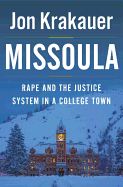
| Publisher: | Doubleday | |
| Genre: | Education, General, True Crime, Women's Studies, Social Science, Higher, Violence & Harassment, Sexual Abuse & Harassment | |
| ISBN: | 9780385538732 | |
| Pub Date: | April 2015 | |
| Price: | $28.95 |
| Current Events & Issues |
by Jon Krakauer
The Department of Justice reports that 110,000 young women in the U.S. are raped yearly. At least 80% of those assaulted don't report it. And odds are that a rape is committed by a serial offender. Why? Jon Krakauer (Under the Banner of Heaven; Into Thin Air) explores the reasons in Missoula: Rape and the Justice System in a College Town, an indictment of one American town emblematic of many.
Missoula's "greatest source of civic pride" is the University of Montana Grizzlies, whose football players display a sense of entitlement fostered by both school and town. In one case, a detective just wanted to ensure the accused player knew his actions weren't "acceptable." In addition, the supervisor of the sexual-assault division of the county attorney's office testified on the player's behalf at a University Court hearing, saying he was "too kind and compassionate" to be a rapist.
Many in the college milieu view accused athletes as beleaguered victims; students and non-student supporters vilify accusers. One young woman, raped by four players, said, "Mom, they're football players and nobody's gonna listen to me." The police chief discounted her claim of never giving consent since she had been intermittently semi-conscious, instead of unconscious.
Victims battle an "almost insurmountable" burden of proof. They tend to have impressionistic memories, rather than linear ones. The trauma "often results in seemingly bizarre behavior," and "involvement in the justice system may compound the original injury."
A 2014 Department of Justice report about Missoula was damning; since the report, changes have been made, but the Griz football team's "pernicious atmosphere of entitlement" is still a problem, mirroring other colleges' troubles.
Missoula is a passionate, maddening jeremiad--the right book at the right time. --Marilyn Dahl, editor, Shelf Awareness for Readers

| Publisher: | Duke University Press | |
| Genre: | Travel, Hospitality, Travel & Tourism, Essays & Travelogues, Industries, Business & Economics | |
| ISBN: | 9780822358695 | |
| Pub Date: | April 2015 | |
| Price: | $23.95 |
| Travel Literature |
by Joshua Ellison, Ilan Stavans
Ilan Stavans and Joshua Ellison's 2012 New York Times opinion piece on traveling garnered attention for its insightful commentary about travel in the modern, globalized world. In Reclaiming Travel, Stavans and Ellison further explore why and how people travel.
They examine the differences between travel and tourism. Travel is a challenge, and one's experiences traveling are not always easy to explain or identify to others. To go on such a journey is to open oneself to risk and misunderstanding. Tourism is fairly effortless, often a passive experience that demands cultures accommodate and insulate visitors. With tourism, locals perform a pantomime of digestible culture that can be captured in photographs and translated into stories for audiences back home.
Stavans and Ellison also note that travel is a privilege largely available to upper- and middle-class people who seek authentic and unusual experiences. But their presence changes the places they go; landscape, culture and activities reshape themselves to accommodate travelers and tourists alike. The demand for exclusive experiences eliminates the "authenticity" sought in the first place, tending to turn travel into mass tourism.
In Reclaiming Travel, rather than draw on personal adventures to share their ideas, Stavans and Ellison offer stories from literature, including Homer's Odyssey and Jamaica Kincaid's Small Island. This helps make their book accessible to any audience because, while it's difficult to experience another person's vacation, these clear, well-written narratives resonate. --Justus Joseph, bookseller at Elliott Bay Book Company
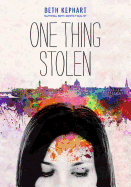
| Publisher: | Chronicle | |
| Genre: | People & Places, Juvenile Fiction, Europe | |
| ISBN: | 9781452128313 | |
| Pub Date: | April 2015 | |
| Price: | $17.99 |
| Starred | Children's & Young Adult |
by Beth Kephart
In a small flat in Florence, Italy, Nadia Cara is losing words, time and, quite possibly, her mind.
Beth Kephart's (Going Over) latest novel takes readers to the heart of Florence and mental illness. Nadia has come to the city with her parents and younger brother, Jack, during her father's sabbatical while he researches the 1966 flood that nearly destroyed Florence. As Jack immerses himself in the world of Italian cooking, Nadia secretly becomes a compulsive thief, stealing bits and pieces from shops and pockets that she later will transform into otherworldly, beautiful nests. Nadia's family notices her unexplained injuries and odd behavior. Even more troubling is Nadia's insistence that she has met an Italian boy with impossibly bright hair and a duffle bag always full of flowers. She knows Benedetto is real, even if no one else has seen him. Only her father's friend, a retired neurologist, has a possible explanation for Nadia's behavior.
Kephart's novel succeeds on many levels. One Thing Stolen takes the bold approach of keeping the majority of the story--all of Nadia's descent--in Nadia's perspective. Readers cannot easily determine if she is a reliable narrator, or if parts of her story may be delusions. Benedetto's appearances and disappearances add an element of mystery and the bittersweet potential of young love. Avoiding the clichés and melodrama that can plague books dealing with mental illness, Kephart instead asks readers to come along with Nadia and experience the danger and beauty of her world. --Kyla Paterno
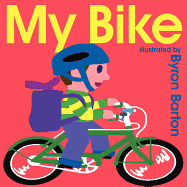
| Publisher: | Greenwillow/Harper | |
| Genre: | Performing Arts, General, Sports & Recreation, Cycling, Circus, Transportation, Juvenile Fiction | |
| ISBN: | 9780062336996 | |
| Pub Date: | April 2015 | |
| Price: | $16.99 |
| Children's & Young Adult |
by Byron Barton
Tom and his bike pull together an entire community in what adds up to a prized preschool trilogy from Byron Barton.
Primary and secondary colors set a fiesta-bright stage. Tom's blue eyes match his helmet as he rides his fine green bicycle to work. His purple backpack holds something mysterious; only the top of its contents show. That's not the only secret he's keeping. Barton labels all parts of the bicycle in a typeface (Avant Garde Gothic) that calls to mind the forest-green alphabet strips in schoolrooms, making it easy for children learning the alphabet to identify letters. Tom models safety, keeping to the clearly marked bike lane: "On the way, I pass trucks..." (one of which gives a clue to Tom's destination). He passes two buses and "lots of cars." Barton's fans will recognize Joe the bus driver from My Bus (with his spotted dog in tow), and Sam from My Car. Striped tents, balloons "and lots of people" add further clues about Tom's workplace. By the time Tom rides past monkeys in costume and a half dozen acrobats, readers will likely figure out the setting. But what does Tom do under the Big Top?
Barton shows Tom putting on white makeup and a bright red nose and mouth, yet leaves room for children to guess his vocation. The author-artist's little twist at story's end (when Tom reveals what's inside his backpack) also provides a pleasing contrast between Tom's rules-abiding manners on the street and the wild ways that his job demands. --Jennifer M. Brown, children's editor, Shelf Awareness